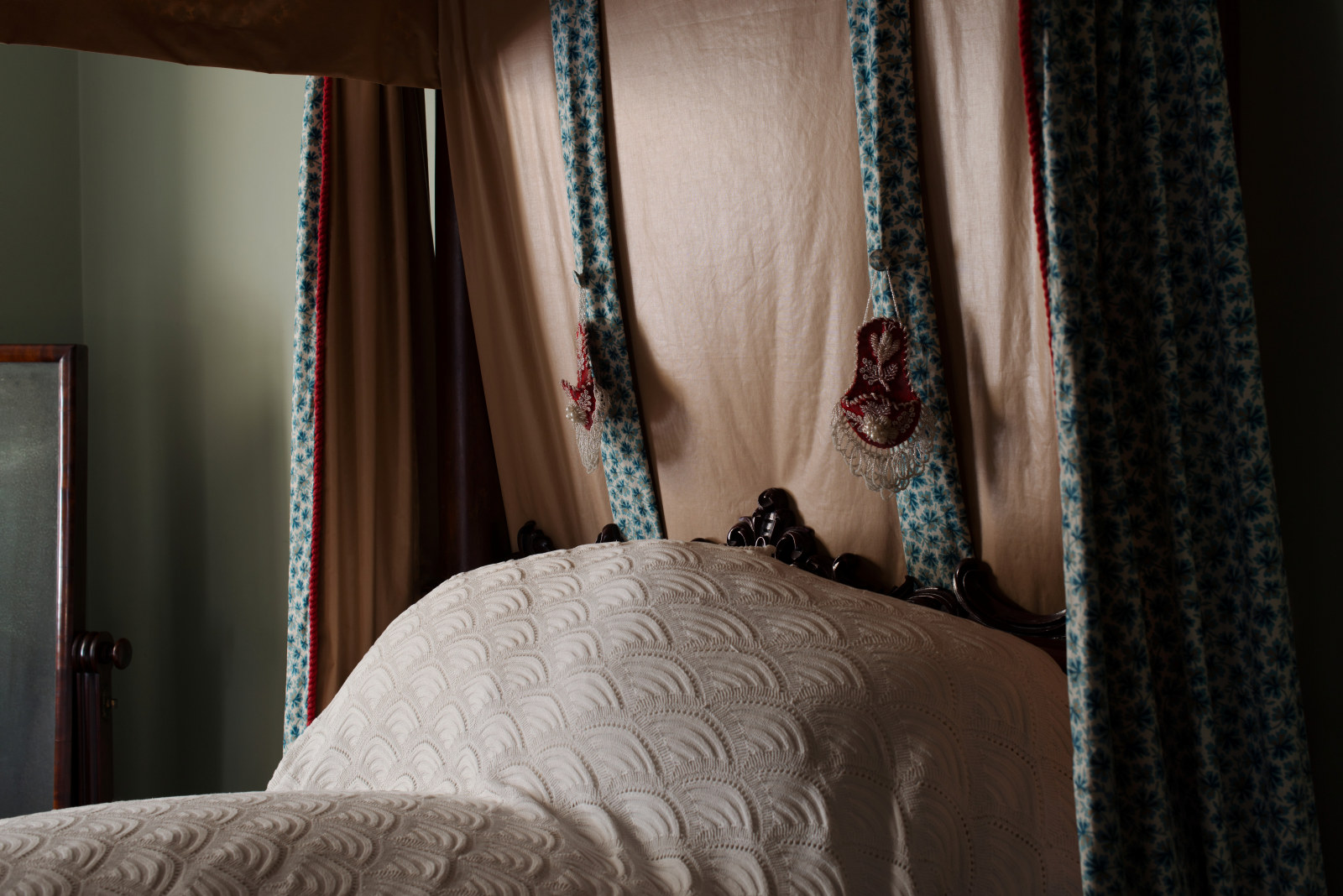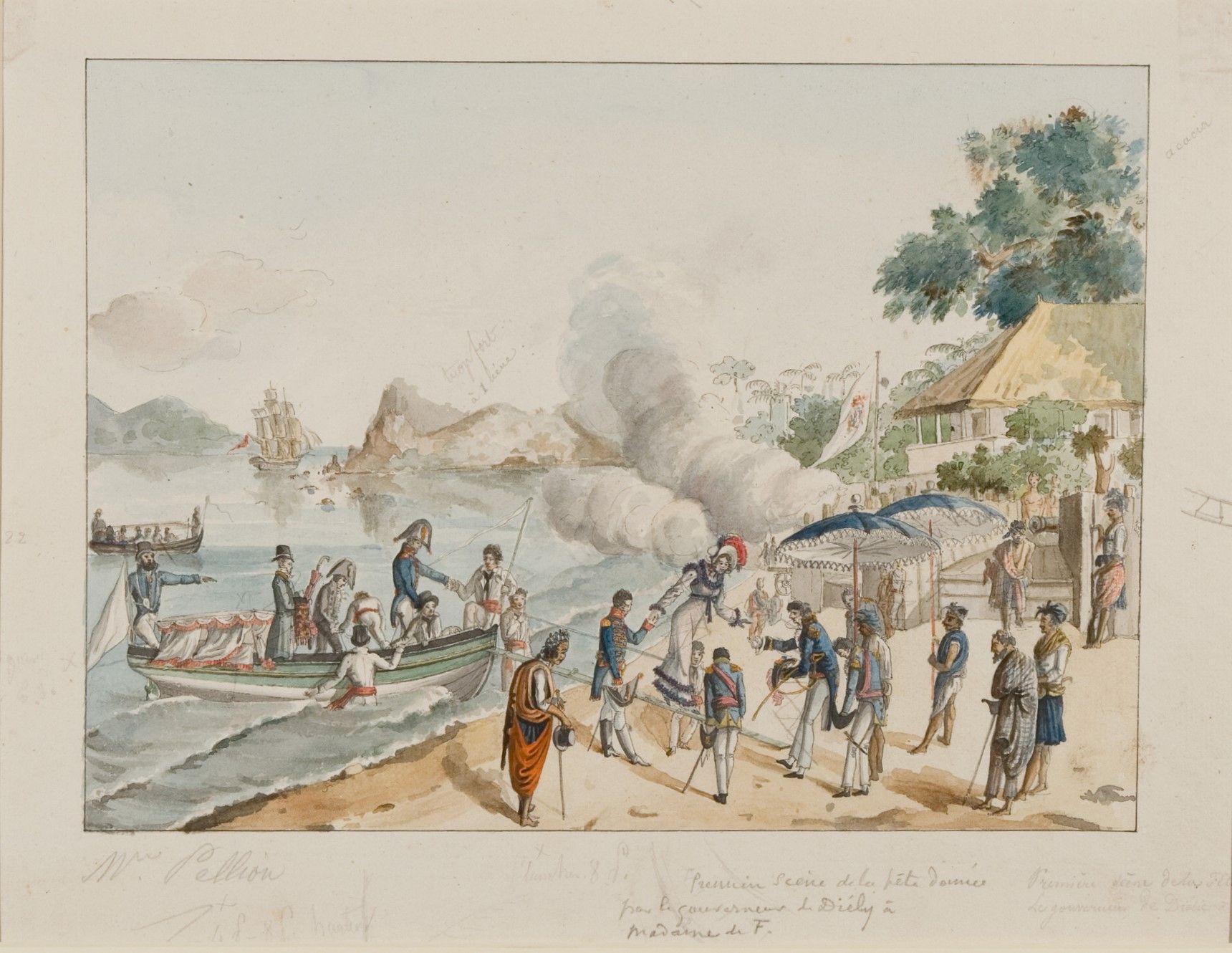Augusto Lorenzini’s allegory
Augusto Lorenzini (1852-1921) was an Italian-born artist decorator who arrived in New South Wales in 1883.
In the 1880s and early 1890s Lorenzini's commissions in Sydney, mostly carried out in the High Renaissance style of Raphael, ranged across commercial, ecclesiastical and domestic work. He was awarded a first order of merit for his mural art decorations in the New South Wales court at the 1888 Melbourne Centennial International Exhibition. This watercolour and gouache presentation drawing is one of a set of designs, each representing one of the Australian colonies. It may relate to Lorenzini’s exhibit at Melbourne in 1888.
Lorenzini’s drawing is part of a long tradition of personifying nations or states using female allegorical figures. There were a number of such representations of New South Wales painted or sculpted in the 1880s, including a statue by Giovanni Fontana in 1883 in which a classical female figure, wearing a chaplet of waratahs, carries a cornucopia of fruit and grain and has a nugget of gold beside her right foot and a fleecy ram at her left foot. A painting by Nicholas Habbe from 1884 also depicts New South Wales as a classical goddess carrying a cornucopia and flanked by a ram. Lucien Henry’s 1888 version of New South Wales in stained glass in the Sydney Town Hall is another female figure surrounded by waratahs and wearing a ram’s-horn headdress. Lorenzini’s representation of New South Wales, by contrast, shows a goddess holding a glittering gold crown, attended by a cupid and seated on a rock in monochromatic bushland. She represents New South Wales as Commerce, in a narrative division of labour between four Australian colonies in which Victoria is Manufactures, Queensland is the Pastoral Industry and South Australia is Agriculture.
New South Wales as COMMERCE
Although the central figure in this picture draws on a classical European tradition, she has been clearly placed within a context of Australian bushland, including a cabbage-tree palm (Livistona Australis) and grass trees (Xanthorrhoea). Her fine blue and gold gown, her gold bracelet and the gold vessels at her feet are emblems of wealth. She holds a crown because New South Wales was the mother colony, just as in some imperial depictions of the four continents (Europe, Asia, Africa, America) Europe wears a crown and holds a sceptre because Europe was the dominant imperial power.
A grid in red chalk has been imposed over the designs below to allow them to be scaled up for a larger work.
This preliminary drawing includes most of the symbolic and landscape elements that appear in the final presentation drawing. The Lorenzini archive also includes another version of the central figure with her attendant cupid as used here. This other drawing is probably a rough tracing from a published source, and is a representation of one of the four seasons. A similar drawing exists for each of Lorenzini’s other allegorical representations of the Australian colonies.
Victoria as MANUFACTURES
The symbols of industry and manufacture in this drawing include an anchor, a wheel, a hammer – and a train. In June 1883 the Victorian broad-gauge and New South Wales standard rail gauge railway systems were connected by the creation of a junction at the border towns of Albury-Wodonga. The connection was celebrated with a banquet in the Albury engine-shed, transformed for the occasion with painted and stencilled canvas panels. A large allegorical painting representing the meeting of the two colonies included a train crossing a bridge behind the figures of Victoria and New South Wales.
Queensland as the PASTORAL INDUSTRY
The symbols of the pastoral industry in this drawing include a group of sheep and a distaff dangling from the fingers of the goddess. The distaff, a tool used in spinning to hold the unspun flax or wool, is used to feed a spindle, keeping the fibres untangled and thus easing the spinning process. The spindle has not been fully sketched in this drawing but the distaff is sufficient to indicate that the colony’s wealth comes from wool.
South Australia as AGRICULTURE
In this design, the least developed of Lorenzini’s representations of the colonies agriculture is symbolised a sheaves of wheat and a handful of grapes.
Published on
Caroline Simpson collection
Browse all
The Astor, 1923–2023
Upon completion in 1923, The Astor in Sydney's Macquarie Stree twas the largest reinforced concrete building in Australia, the tallest residential block, and this country’s first company title residences

City of Gods, my early experience and toy boat
Inspired by a watercolour of the ruins of the temple of Vishnu, refugee curator in residence Jagath Dheerasekara writes about Devinuvara as a site of pilgrimage, colonisation and uprising

Watch pockets
Watch pockets hung on the head cloth of a four-post bedstead and originally served in place of bedside tables, which were uncommon in the 19th century

